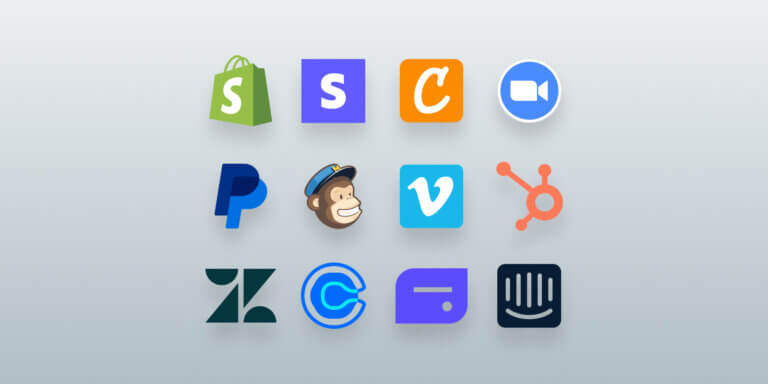Table of Contents
An elearning authoring tool is a vital component in developing high-quality elearning content. It’s a must-have for instructional designers, elearning professionals, and training businesses that aim to release compelling courses and enhance learner engagement.
While many learning management systems (LMSs) now include built-in authoring features, they often lack the flexibility and advanced capabilities of dedicated elearning solutions. For teams building dynamic elearning content or workplace training programs, portability is key, especially when switching between LMS platforms. That’s why many course creators prefer standalone elearning authoring software to ensure smoother workflows and greater control over content quality.
With so many elearning tools on the market, ranging from cloud-based platforms to desktop-based tools, it can be challenging to pick the right fit. In this guide, we’ll explore the best elearning authoring tools for 2025, covering key use cases to help you create engaging learning experiences tailored to your goals, team skills, and delivery format.
What are elearning authoring tools?
Elearning authoring tools are software applications used to create digital training content such as courses, quizzes, simulations, and assessments. Authoring tools help instructional designers and educators build interactive, multimedia-rich learning experiences—often without requiring coding skills—so content can be delivered through an LMS or shared directly with learners.
At their core, elearning authoring tools enable users to build, organize, and package digital training materials. These platforms combine multimedia content like text, video, audio, and images with interactive elements such as quizzes, scenarios, and knowledge checks to boost learner engagement and knowledge retention. Once complete, the content can be exported in formats like SCORM, xAPI, or HTML5 for LMS delivery and tracking.
Some authoring tools for elearning are cloud-based; others are desktop-based. Some function as standalone products, while others are integrated within LMS platforms. The best elearning solutions for you will depend on your goals, budget, and how much flexibility you need over content customization, interactivity, and analytics.
Most elearning professionals in learning and development, corporate training, or online course creation use content authoring tools to build structured, engaging courses. While LMSs often include basic editors, dedicated authoring platforms offer advanced features like responsive course design and localization, making them ideal for elearning projects that demand scalability and long-term flexibility.
What are the benefits of content authoring tools?
Content authoring tools improve the process of creating, managing, and delivering learning materials at scale. These tools help you save time and reduce manual work by providing all the infrastructure needed for great content delivery, including pre-built templates and drag-and-drop features that speed up the creation process.
Other key benefits of using authoring software for content creation include:
Types of elearning authoring tools
Not all elearning authoring software is built the same—and that’s a good thing. Different teams, elearning projects, and content strategies call for different tools. The right platform depends on how you work, what you’re building, and where your elearning courses will be delivered.
Here’s a breakdown of the main categories to help you understand what’s out there:
Standalone tools
Standalone tools are dedicated platforms designed specifically to create engaging courses. They offer powerful features like:
Tools like Articulate Storyline, Adobe Captivate, and iSpring belong here. These tools typically export to SCORM or xAPI, making them compatible with most LMSs and ideal for building high-quality elearning.
LMS-integrated tools
LMS-integrated content authoring tools are ideal for creators who want to build and manage elearning courses from a single platform. While they may lack the advanced customization of standalone tools, they offer a user-friendly interface and quick deployment.
LearnWorlds, for instance, combines cloud hosting, built-in assessments, and ecommerce tools to help users create compelling courses without switching between platforms.
💡 Keep learning: The top 10 Learning Management Systems for 2025
PowerPoint-based tools
If you’re already using PowerPoint, PowerPoint-based tools like iSpring Suite or Articulate Studio let you turn your presentations into interactive elearning content. These are ideal for training materials, onboarding, and product walkthroughs, especially if you want to create engaging content without needing advanced technical skills.
Cloud-based vs desktop software
Cloud-based elearning authoring tools are accessible via your browser and support collaborative working, real-time feedback, and remote updates, making them perfect for distributed teams. Examples include Elucidat and Easygenerator.
On the other hand, desktop-based tools like Storyline or Captivate provide deep customization for elearning professionals, but often require higher specs and a stable internet connection for updates.
Each elearning authoring software type has its pros and trade-offs. Choosing the best fit means weighing your team’s technical skills, whether you need localization features for multiple languages, or if mobile-first, responsive course design is a priority. Your tool should match how you work, not the other way around.
What are the use cases of authoring software?
Authoring tools are practical solutions used every day by teams who need to train people without starting from scratch each time.
For example, a manager at a logistics company might need to explain a new delivery protocol. Instead of sending an email that gets buried, they can build a short, interactive module that walks the team through the steps, with a quick quiz at the end to make sure it sticks.
Common authoring software use cases include:
Key features of great authoring tools
The best elearning authoring tools strike the right balance between power and usability. Whether you’re designing interactive lessons for customer education or building compliance training for your team, there are a few non-negotiables to look out for.
Ease of use and learning curve
A user-friendly interface matters more than flashy features. The tool should help you create engaging content efficiently, without a steep learning curve or extensive technical skills. If it takes too long to produce a simple module, your team won’t use it—no matter how powerful it is.
Interactivity and multimedia support
Today’s learners expect more than static slides. The best authoring tools allow you to create dynamic elearning content by adding quizzes, drag-and-drop activities, branching scenarios, simulations, and multimedia content like video, voiceovers, and animations. These features help enhance learning engagement and boost knowledge retention across your elearning courses.
SCORM, xAPI, and LMS compatibility
Your elearning content doesn’t live in a vacuum—it needs to integrate smoothly with your LMS. Choose tools that support SCORM, xAPI, or cmi5 formats to ensure accurate tracking, learner analytics, and seamless LMS delivery. Compatibility is especially important when you’re building elearning modules for compliance or certification programs.
Templates and customization
Pre-built templates speed up development—but they shouldn’t lock you into a rigid structure. The best tools offer an extensive library of templates that you can fully customize to match your brand and content style. This is key when trying to release compelling courses that feel polished and professional.
Collaboration and version control
Creating elearning content is often a team effort. Tools that support collaborative working—with role-based permissions, real-time comments, and version history—help teams iterate faster and reduce production errors. These features are particularly valuable when building complex elearning projects across departments or locations.
Bonus features like responsive course design, localization features for multiple languages, and accessibility compliance (e.g., WCAG) are no longer optional—they’re expected. Whether you’re building training tools for global teams or creating elearning modules that work on any device, these capabilities help ensure inclusive, scalable content delivery.
Now let’s hear what the experts are saying about these tools and their must-have capabilities:
“When we developed an onboarding series for a fast-growing fitness brand, the most significant consideration when selecting an elearning authoring tool was the ability to go from concept to launch quickly without sacrificing quality. The capacity for a collaborative real-time drag-and-drop editor with templates would allow our team to roll out updates within days instead of weeks.”
Adam Bocik, Founder at Ever Green Results
“I have noticed that the most powerful tools have a number of distinct characteristics. First, AI-driven and adaptive capabilities should no longer be a luxury. Learners are beginning to demand courses that adapt in real-time, based on their pace, skill level, and learning style. Second, the ability to work cross-platform should be an essential feature, not just to be mobile responsive, but also to provide seamless offline access for parts of the world where internet connectivity is sketchy.”
Volodymyr Kaminovskyy, CEO at Lionwood Software
13 top elearning authoring tools in 2025
Choosing the best elearning authoring tool is not about finding the one with the most features; it’s about finding the right fit for your goals, content needs, and team.
Whether you’re building short onboarding modules or large-scale training programs, here’s a look at the 13 top elearning authoring tools to consider in 2025.
1. LearnWorlds: An all-in-one cloud LMS and authoring tool

LearnWorlds is more than a traditional LMS, it’s an AI-powered, cloud-hosted platform with built-in elearning authoring software designed for speed, interactivity, and flexibility. From designing online academies to delivering workplace training, it allows you to create engaging content, manage learner analytics and reports, and offer branded learning experiences, all in one platform.
Unlike most LMSs that include only basic editors, LearnWorlds goes a step further. It supports dynamic elearning content through interactive videos, form-based assessments, and customizable learning activities. It’s SCORM-compliant and compatible with various elearning tools, allowing seamless integration of content built using external authoring platforms like Articulate or iSpring.
What stands out:
Best for
Course creators, SMEs, instructional designers, elearning professionals, and businesses, looking for a powerful all-in-one elearning software type to create content, courses, manage training materials, and scale their digital academy.
Pricing
LearnWorlds offers three main plans, all including authoring and hosting:
You can compare the different plans here.
*Pricing information retrieved in July 2025.
Pros:
Cons:
2. Articulate Storyline 360
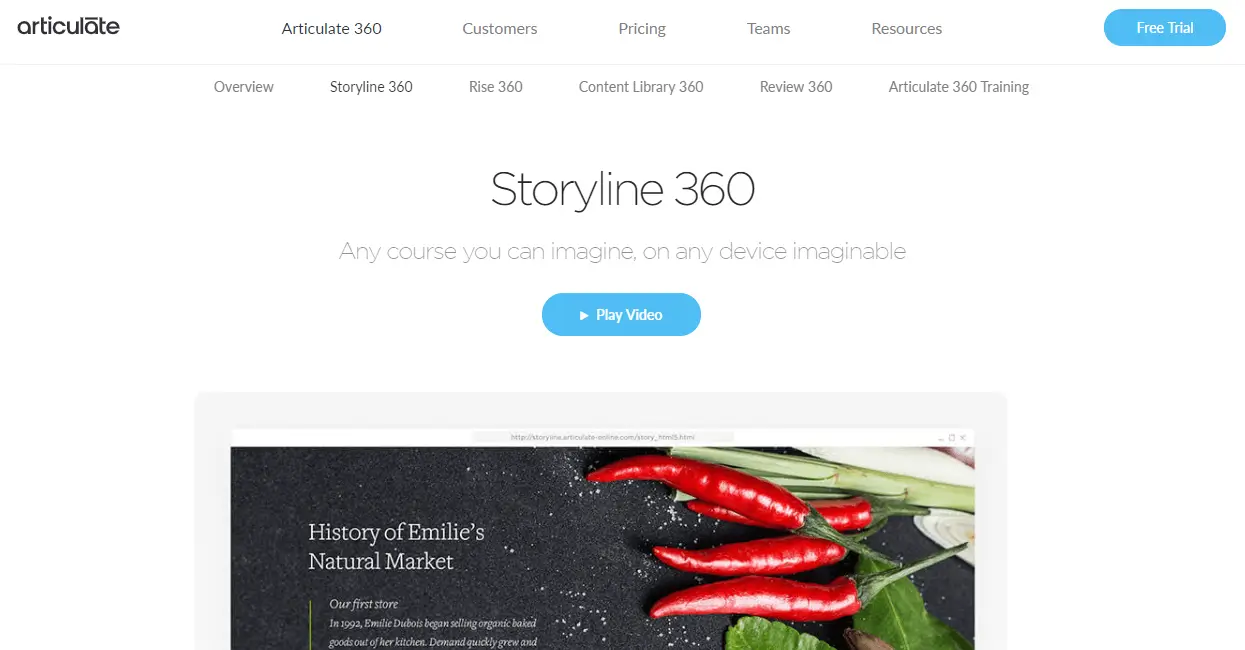
Articulate Storyline is one of the most recognized elearning authoring tools in the industry, and for good reason. This PowerPoint-inspired platform allows users to create compelling courses with advanced interactivity, branching scenarios, quizzes, and custom navigation. Though it comes with a steeper learning curve, it remains a top choice for elearning professionals who need full control over content design and functionality.
You can work offline, build your content exactly the way you envision it, and export it to SCORM or xAPI for LMS delivery. It also integrates with Articulate Rise (a cloud-based tool that’s more template-driven) as part of the Articulate 360 suite.
What stands out:
Best for
instructional designers, elearning developers, and organizations that need full control over content design and interactivity.
Pricing
Articulate 360 has one main plan for business use:
*Pricing information retrieved from Articulate 360 in July 2025.
Support
Articulate Storyline support is available via live chat and online, where you can find help through community forums, training, resources, and articles on course building, books, tutorials, and user guides.
Pros:
Cons:
3. Elucidat
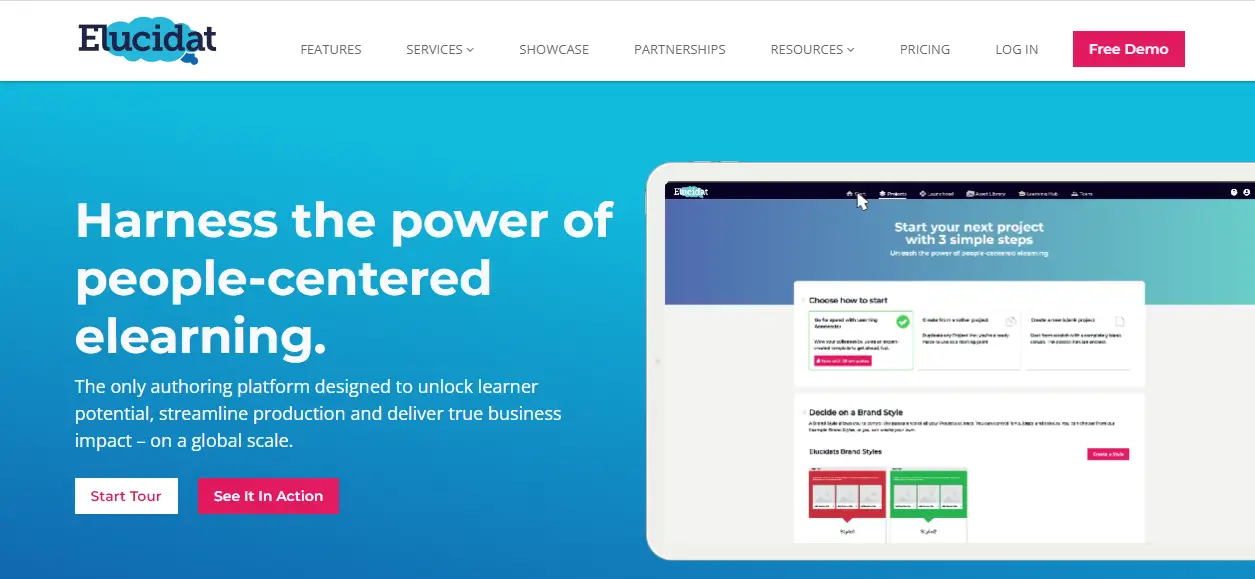
Elucidat Articulate Storyline support is available via live chat and online, where you can find help through community forums, training, resources, and articles on course building, books, tutorials, and user guides.
While you can’t design custom templates from scratch, the platform includes a massive template library and a clean interface that makes course building feel less overwhelming, especially for less technical users.
What stands out:
Best for
Mid-sized to large organizations, learning teams, and enterprises that need a collaborative, cloud-based tool for scalable content creation.
Pricing
Elucidat offers the following pricing structure: Growth, Team, and Enterprise, but pricing is not publicly listed. You’ll need to contact sales for a custom quote based on the number of users, learners, and required features.
**Pricing information retrieved from Elucidat in July 2025.
Support
Elucidat live support is based in the UK and the US, and they are available Monday to Friday from 09:00 to 21:00 (UK time). They also provide support via email and online by submitting a request. Outside of these hours, it has a help desk where you can search for articles written by the Elucidat team that offer advice and answers to the most common questions.
Pros:
Cons:
4. Adobe Captivate
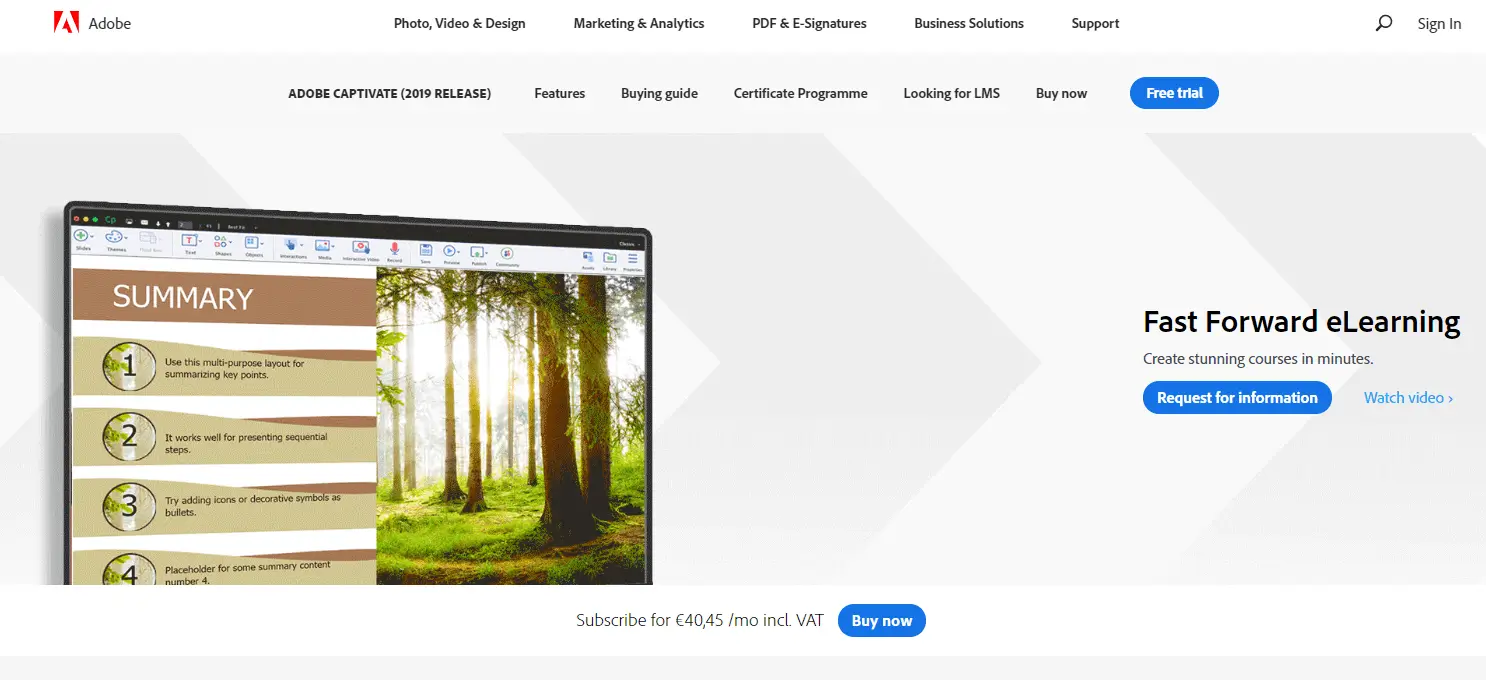
Adobe Captivate has been around for years and remains one of the most feature-rich authoring tools on the market. It’s designed for users who want to build sophisticated learning experiences like simulations, software walkthroughs, interactive videos, and VR training. While the interface isn’t the most beginner-friendly, the tool itself is powerful if you know how to use it.
Captivate supports responsive design, PowerPoint integration, and a wide range of export options, including SCORM, xAPI, AICC, and HTML5. It’s ideal for teams creating compliance training, onboarding, or product demos that need to feel interactive and hands-on.
What stands out:
Best for
Experienced instructional designers and training professionals creating advanced, interactive content, especially for enterprise use.
Pricing
*Pricing information retrieved from Adobe in July 2025.
Support
Adobe Captivate support is accessed via email. Whenever you need help using the product, you can access their Help Center or their community forums, where you can ask other people or professionals for help.
Pros:
Cons:
5. Lectora Online
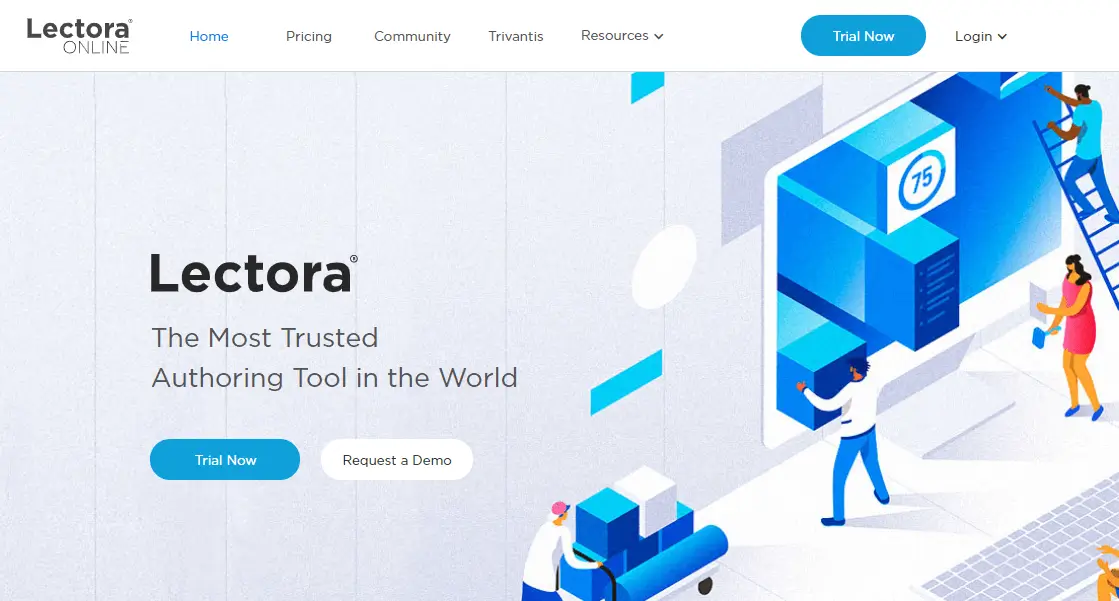
Lectora Online now part of ELB Learning, is a cloud-based authoring software known for its flexibility, accessibility features, and standards compliance. It’s a solid choice for enterprise training, government programs, and anyone who needs to meet strict requirements like Section 508 or WCAG accessibility guidelines.
While it has a steeper learning curve than some tools on this list, Lectora gives you fine-grained control over your course logic, layout, and content flow. It also integrates with tools like Camtasia and Snagit, which is useful for teams who want to include screencasts and annotated visuals.
What stands out:
Best for
Instructional designers and training teams that need a responsive, standards-compliant tool with robust customization options.
Pricing
Lectora Online offers three pricing tiers:
*Pricing information retrieved from ELB Learning in July 2025.
Support
Lectora Online support is available during business hours. Outside of these hours, you can visit the ELB Learning community to communicate with other users, or check out their knowledge base or their blog.
Pros:
Cons:
6. iSpring Suite
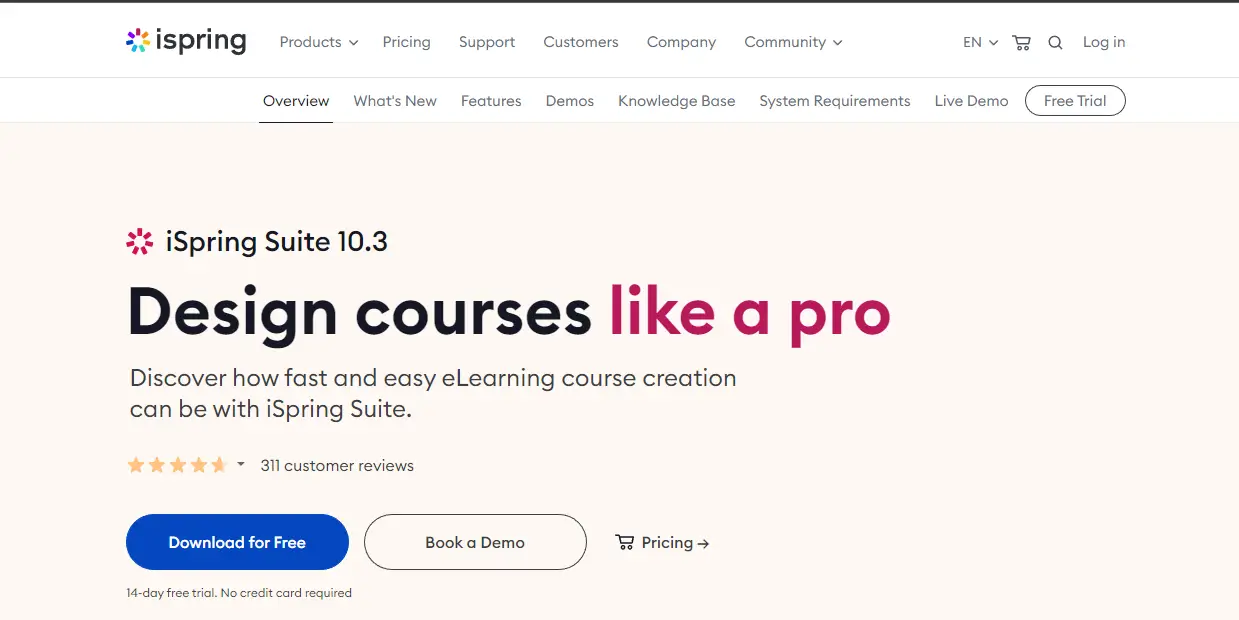
iSpring Suite is a favorite among beginners and educators thanks to its seamless integration with PowerPoint. If you already know how to use slides, you’ll feel right at home. But don’t let the simplicity fool you, iSpring is more than a PowerPoint add-on. It includes tools for quizzes, dialogue simulations, screen recording, and even role-playing scenarios.
It’s a great pick for creating onboarding, product training, compliance modules, and other practical training content without a steep learning curve. You can publish to SCORM, xAPI, AICC, or cmi5, and upload content into almost any LMS.
What stands out:
Best for
PowerPoint users, educators, and small to mid-sized teams who want a familiar, quick-start way to build professional elearning content.
Pricing
*Pricing information retrieved from iSpring Solutions in July 2025.
Support
iSpring Suite support is available 24/7 via phone, email, and chat. On top of that, it has an online community with a range of forum activities and a support center with guides and articles you can browse whenever you need help using the tool.
Pros:
Cons:
7. EasyGenerator
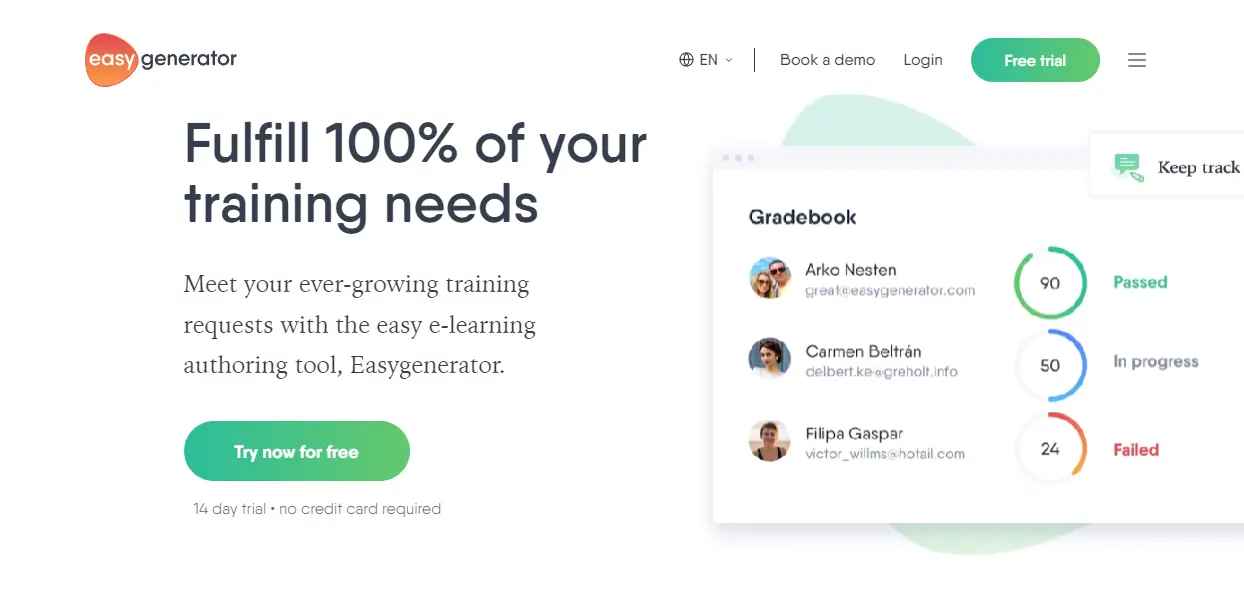
Just like its name says, EasyGenerator is all about ease of use. It’s a cloud-based authoring platform designed to help non-technical users create online courses through a guided, drag-and-drop interface. It’s ideal for quick training modules, product tutorials, and internal knowledge sharing.
While it’s not as powerful as Storyline or Captivate, it shines in environments where speed, collaboration, and simplicity matter more than custom code or complex branching. You can create interactive content, track learner progress, and export to SCORM or use a direct link, all without writing a line of code.
What stands out:
Best for
Subject matter experts, small teams, and companies looking for a simple, no-fuss tool to create learning content fast, without needing instructional design expertise.
Pricing
Easy Generator has three pricing plans:
*Pricing information retrieved from EasyGenerator in July 2025.
Support
Easy Generator support is available during business hours and offered live online through Easy Generator Live. It also has a Help Center and a knowledge base that is full of articles divided by categories for easier browsing, as well as a resources page with case studies and a blog.
Pros:
Cons:
8. isEazy
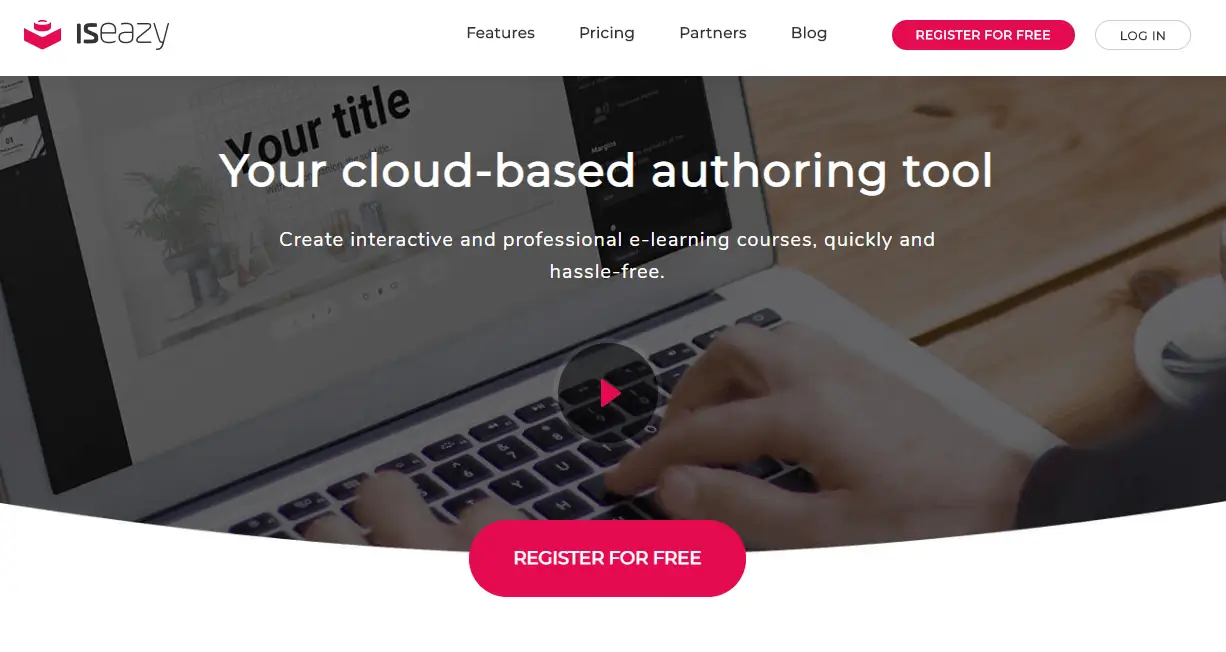
isEasy is a browser-based authoring tool that focuses on simplicity, speed, and professional-looking output. It’s designed for users who don’t want to deal with steep learning curves or complex interfaces. You can build responsive courses with text, images, videos, and assessments, and export them to SCORM for easy LMS integration.
What makes isEazy stand out is its clean UI, affordable entry point (including a free version), and accessibility features. It’s ideal for teams that want to build branded content fast, without the bells and whistles of enterprise platforms.
What stands out:
Best for
Freelancers, small businesses, and organizations that want a sleek, modern tool to build simple interactive courses quickly, without a big budget or tech team.
Pricing
*Pricing information retrieved from isEazy in July 2025.
Support
isEazy support is available 24/7. It has a knowledge base you can visit whenever you need help using the tool. It has many example courses and demos you can check out, FAQs, and a blog with helpful guides and articles.
Pros:
Cons:
9. Evolve
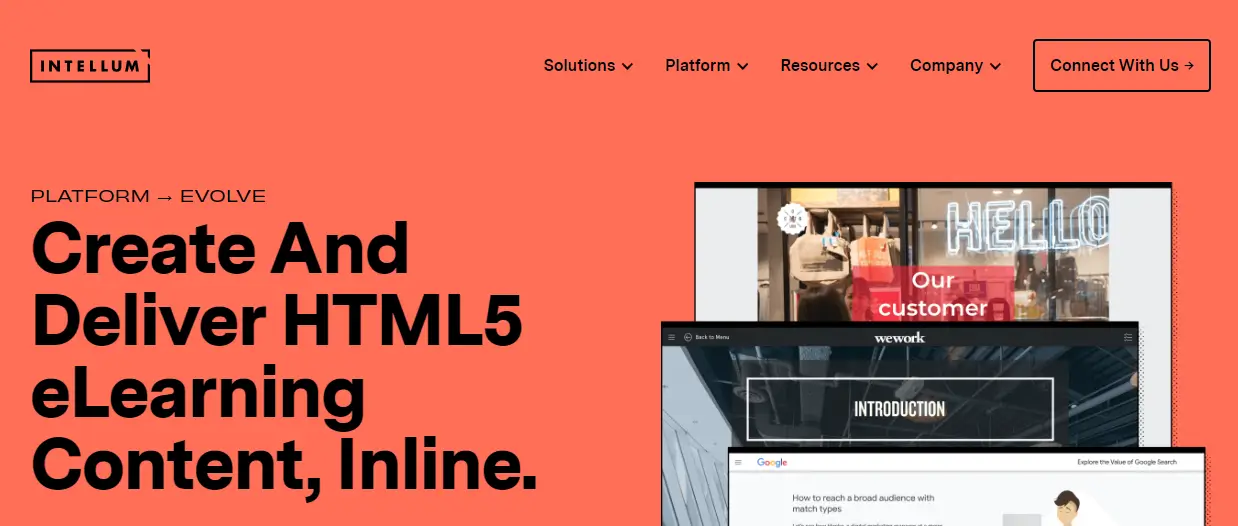
Evolve is a cloud-based content authoring tool trusted by global brands like Google, Pearson, and Randstad. It’s designed to help teams build beautiful, interactive elearning content without needing to write code. With a responsive layout by default, Evolve ensures that every course works smoothly across desktop, tablet, and mobile.
It also stands out for its flexibility. You can configure layouts, themes, and interactions without diving into complex logic. Evolve is particularly useful for teams that need collaborative workflows, simulation-style courses, or want control over the course look and feel.
What stands out:
Best for
Teams creating sleek, responsive content at scale, especially for mobile-first audiences and organizations focused on collaborative course design.
Pricing
*Pricing information retrieved from Evolve in July 2025.
Pros:
Cons:
10. H5P
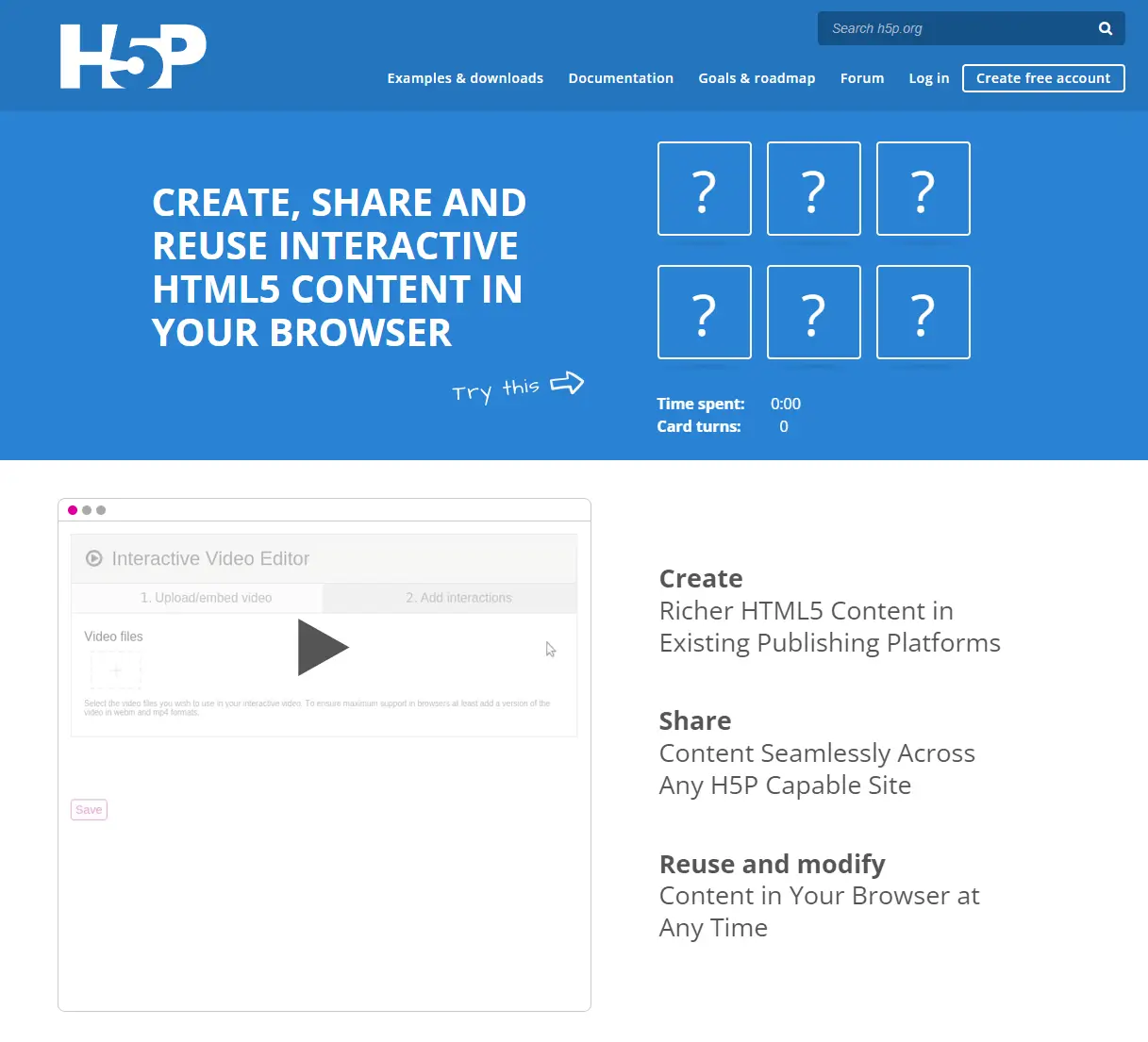
H5P (short for HTML5 Package) is a free, open-source authoring framework used to create bite-sized, interactive learning activities. It’s popular with universities, K-12 institutions, and Moodle or Canvas users, thanks to its affordability, community support, and easy integrations.
H5P lets you build interactive videos, image hotspots, timelines, drag-and-drop exercises, quizzes, and more. It’s not a full course authoring tool in the traditional sense since you won’t design full modules here. If you’re looking to add interactivity to your existing LMS-based content, it’s one of the easiest (and most budget-friendly) ways to do it.
What stands out:
Best for
Educators, course creators, and developers looking to enhance existing content with interactive learning elements, especially in academic or open-source environments.
Pricing & Hosting
Team Plan
Custom Plan
Educational Enterprise Licensing
*Pricing information retrieved from H5P.com in July 2025.
Pros:
Cons:
11. Synthesia

Synthesia is an AI video creation tool that turns written text into narrated, avatar-led videos. It’s ideal for training videos, onboarding messages, explainer content, and localization. You choose a virtual presenter, type in your script, and the tool generates a professional-looking video with a lifelike AI voice and gestures.
While it’s not a full authoring tool, it integrates well with most LMSs and can boost engagement when used alongside other tools.
Synthesia works best as a video creation add-on to your training strategy—especially when you want to personalize and localize content without a production team.
What stands out:
Best for
Businesses, HR teams, and content creators who want to build training videos with AI avatars, without using a camera or recording voiceovers.
Pricing
*Pricing information retrieved from Synthesia in July 2025.
Pros:
Cons:
12. Camtasia

Camtasia is a desktop-based screen recording and video editing tool that’s widely used for creating software tutorials, how-to videos, and explainer content. It includes drag-and-drop editing, transitions, annotations, cursor effects, and even quiz overlays.
While it’s not an elearning authoring tool in the traditional sense, it integrates with platforms like LearnWorlds, Lectora, and Storyline for seamless video-based training.
Camtasia is ideal when your training needs revolve around software tutorials or video-first content, and when you want full control over editing and visuals.
What stands out:
Best for
Creators and trainers who want to record their screen, edit tutorials, and create polished training videos with voiceovers, callouts, and animations.
Pricing
*Pricing information retrieved from Camtasia in July 2025.
Pros:
Cons:
13. Adapt Learning

Adapt Learning is an open-source elearning authoring tool built specifically for creating responsive, HTML5-based learning content. The platform is ideal for L&D teams and developers who want full control over the learning experience and flexibility to customize. Adapt outputs SCORM-compliant content and is known for its clean, mobile-friendly design.
What stands out:
Best for
Instructional designers and developers who need a flexible, standards-compliant tool for building scalable digital learning—especially when mobile responsiveness and customization are top priorities.
Pricing
Adapt is open-source and free to use. Hosted versions or custom development support are available through third-party providers.
Pros:
Cons:
Elearning authoring tools comparison table
How to choose the right authoring tools for elearning
There’s no one-size-fits-all authoring tool. Your ideal choice depends on your specific goals, technical setup, and content needs. Before you commit, take time to map out your priorities so you can match the tool to your real-world use case.
Here’s how to choose the right authoring tools for elearning.
Match features to your learning goals
Are you building compliance training with interactive branching? A short product walkthrough for customers? Or academic modules for remote learners? Tools like Articulate or Captivate offer deep interactivity, while platforms like LearnWorlds or Easygenerator are great for quick, polished delivery.
If localization, mobile-first design, or accessibility (like WCAG compliance) is on your list, filter out any tool that doesn’t meet those minimum standards.
Factor in your budget
Some tools come with free versions or low-cost entry plans (like isEazy and H5P), while others require an annual commitment or per-author license. Don’t just compare headline prices. Check for extra costs like add-ons, storage, or learner limits. And always use the free trial if it’s available.
Consider your team size and skills
If you’re a solo creator or SME, you probably want something fast and intuitive like iSpring or Easygenerator.
Larger teams with instructional designers and reviewers might need collaboration features, content control, and user roles, like Elucidat or Evolve.
Also, consider whether your team is tech-savvy. Some tools (like Captivate or Lectora) require more time to master, while others work straight out of the box.
Think about your use case
Are you hosting the content on an LMS? Then SCORM or xAPI support is a must. Want to embed learning in your own website? Look for HTML5 export. Selling online courses? You may need ecommerce, certificates, and branding, features already built into tools like LearnWorlds.
Don’t choose based on features alone, rather based on the outcome you want to achieve.
Choosing the right authoring software: Your quick checklist
Before you decide on your next authoring software, run through this list:
Not sure where to start? Test LearnWorlds’ LMS for content creation
Here’s what we recommend:
In the end, the best elearning authoring tools should support your process, not complicate it. Choose the one that makes it easier to build the kind of learning experience you’d enjoy taking yourself.
LearnWorlds combines a flexible course builder with everything you need to deliver, track, and monetize training without juggling multiple tools. From SCORM compliance to mobile learning and branded academies, our LMS for content creation is built for users who want full control and zero friction. Start your 30-day free trial today, no credit card required.
Rosemary is LearnWorlds’ Content Marketing Manager. She has over 2 decades of experience in omnichannel marketing and content writing for the IT and SaaS industry. Her expertise lies in crafting effective content marketing strategies that attract, engage, and nurture customers, enabling LearnWorlds to reach its target audiences with precision.
Kyriaki is the SEO Content Manager at LearnWorlds, where she writes and edits content about marketing and e-learning, helping course creators build, market, and sell successful online courses. With a degree in Career Guidance and a solid background in education management and career development, she combines strategic insight with a passion for lifelong learning. Outside of work, she enjoys expressing her creativity through music.
FAQ
Everything you have ever wondered, but were too afraid to ask...




